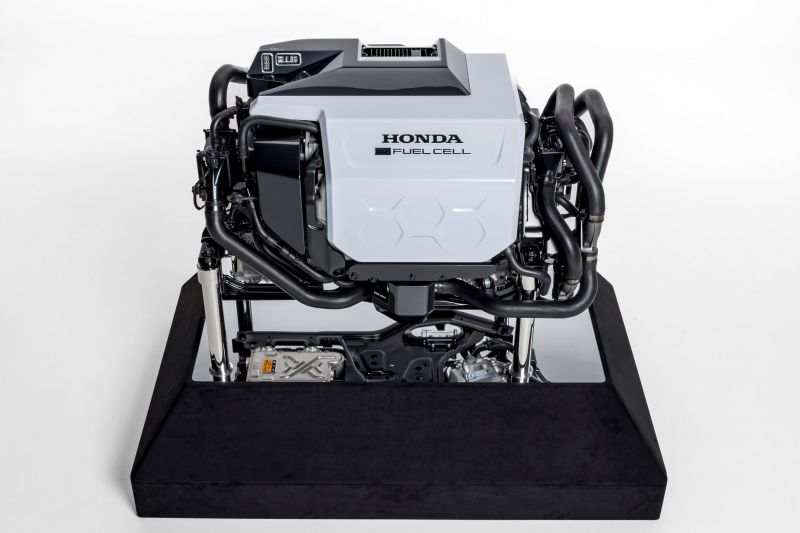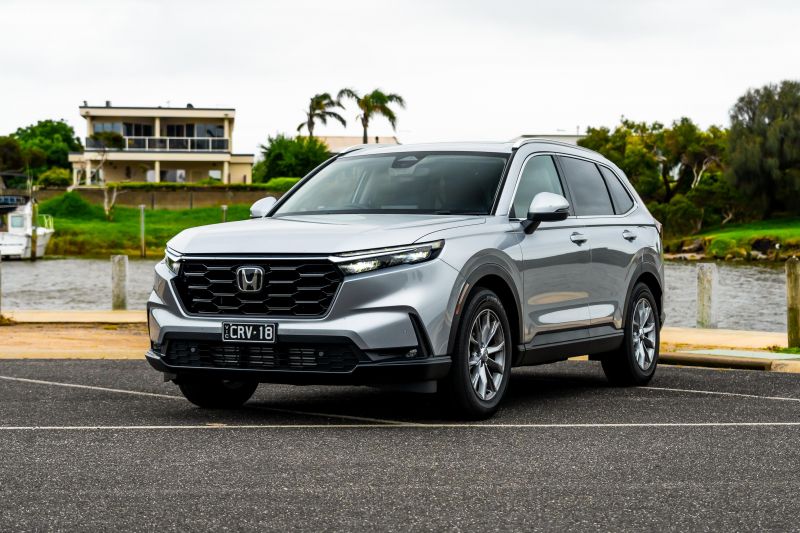Honda has whipped the covers off its next-generation hydrogen fuel cell setup at the Brussels Expo as part of European Hydrogen Week.
Finished in shiny black and silver plastic, the new fuel cell looks impressive, but unfortunately Honda has yet to release any details about the unit, or quantify how it is better than the system used in the quirky Clarity Fuel Cell.
The Clarity Fuel Cell, which went out of production in 2022, had a 103kW electric motor driving the front wheels. With its compressed hydrogen tanks filled to the brim, it had an estimated driving range of 580km.
The next-generation fuel cell system will see its first automotive application in the upcoming CR-V Fuel Cell, which will go on sale in the US and Japan in 2024.
If the previous two generations of Clarity Fuel Cell are anything to go by, sales (or leases) will be limited to regions where there is some hydrogen refilling infrastructure in place, primarily California.
As part of Honda’s partnership with Isuzu, it’s working on a prototype heavy duty commercial truck powered by the new fuel cell stack. It will be unveiled before the end of the current Japanese financial year (March 31, 2024), with a production version slated to go on sale by 2027.
Honda is also looking to use its latest fuel cell stack for backup power generators and for construction machinery, such as excavators and wheel loaders.
Only three major automotive groups are currently investing heavily in hydrogen fuel cell technology: Toyota/BMW, GM/Honda, and Hyundai.
In 2021, Honda committed to selling only electric and fuel cell vehicles by 2040.
Until recently Toyota was the most ebullient about the technology, seeing it as a critical part of its zero tailpipe emissions strategy. That recently changed when Koji Sato took over as CEO, and shifted the focus of its hydrogen fuel cell research towards commercial vehicles and away from passenger cars, like the Mirai sedan.
Other commercially available hydrogen fuel cell cars are the BMW iX5 Hydrogen Fuel Cell, and Hyundai Nexo.
Hydrogen fuel cells combined hydrogen stored in heavily pressurised on-board tanks with atmospheric oxygen to produce electricity that is used to power an electric motor that drives the wheels.
As with a traditional petrol-electric hybrid setup, excess energy production, as well as anything captured from regenerative braking, is stored in a relatively small battery pack.
While pure electric vehicles can take hours to recharge, hydrogen fuel cell cars have a quick refilling time, which is roughly on par with petrol and diesel vehicles.
Downsides include a lack of hydrogen refuelling infrastructure, and large scale facilities to produce hydrogen in a green and efficient manner.


